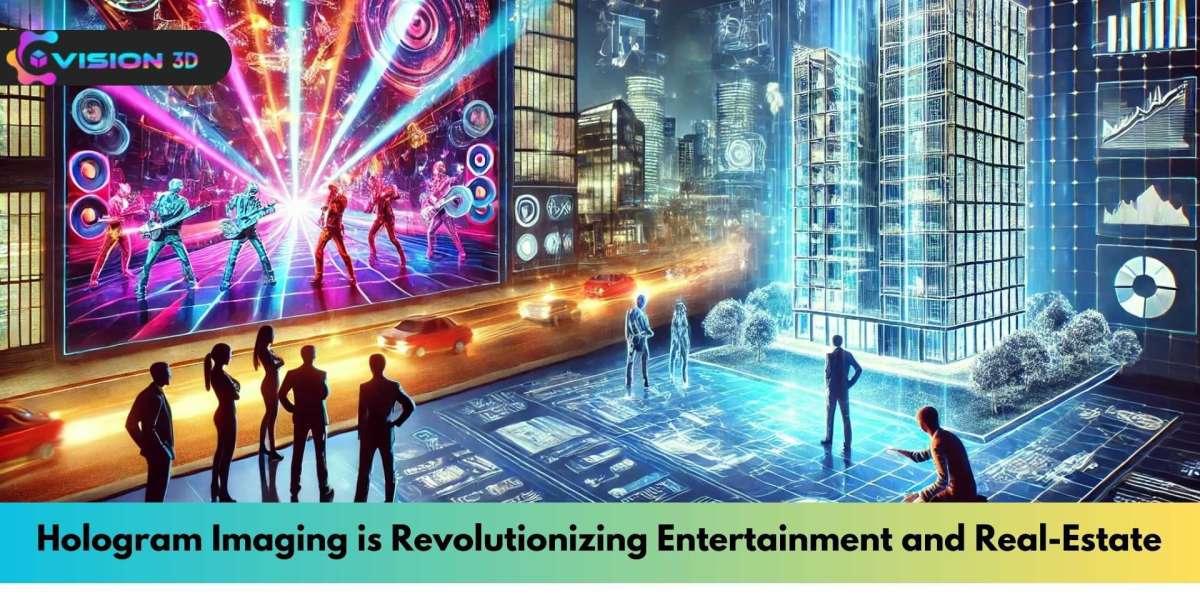Holograms are quickly revolutionizing the entertainment and real estate industries as new methods for entertaining the audience or selling a property. This technology used in the generation of three-dimensional images, which are felt to be suspended in the air, is gradually gaining more and more applicability and at the same time portability, which makes it a tool of usefulness in almost every field of operation.
The Rise of Hologram Imaging
Sophisticated projection has been used by hologram imaging to display even the most realistic three-dimensional images. Different from conventional information, holographs provide depth, and this gives users an actual feel of the content. This capability is more importantly useful in areas such as entertainment and property, in which aesthetic appeal is paramount, especially with the use of an interactive hologram projector.
Revolutionizing Entertainment
In the entertainment industry, the use of interactive hologram projectors has changed not just the way content is delivered but embraced creativity in the industry. These projectors can build actively changeable areas and the viewers are not just passive spectators. For instance, Axiom Holographics’ Hologram Wall: The company has developed a 3D hologram technology whereby the users have to physically touch the screen to get an illusion of a hologram. It allows the practical visiting of various practically fictionalised spaces to vibrant performances of often real subjectivity.
In addition, virtual reality applications mean that holographic displays can enrich gaming experiences. For instance, the Hypervsn Wall has a series of rotating LED blades that create incredible 3D projection graphics and interfaces whereby players can move their hands to interact with props in gameplay. The kind of innovations mentioned above not only grab people’s attention but also create engagement and new potential in gaming and events.
Transforming Real Estate
In the real estate sector, holographic imaging is revolutionalizing how properties are advertised and disposed of. Laser Hologram Projector help the potential buyer to see spaces in ways that are impossible for photos or even moving images. Through the use of 3D property models, agents can sell houses online and let their clients tour around physically using their iPads and other smartphones. This technology offers an additional dimension in assessing a property and its characteristics, which will help in decision-making.
For example, the Hologram Room from Axiom Holographics is designed to make clients receive a 3D tour based on life-sized models of buildings or developments. This not only improves the quality of the view but also allows immediate changes to designs based on the buyer’s feedback- something valuable for architects and developers who aim to adjust the projects to the buyer’s wants.
Benefits of Holographic Technology
The advantages of using hologram imaging in both entertainment and real estate are manifold:
Enhanced Engagement
A still picture, still image and Hologram cannot be compared when it comes to arresting people’s attention. Since most of the information presented on these displays is in the form of an image or video, the audience is often compelled to engage themselves in the presentation, resulting in a better ability to retain the information.
Improved Visualization
In real estate, holograms do create the ability to model structures before they can be constructed or refurbished. This brings about accurate interaction between developers and clients.
Cost Efficiency
Holography might call for initial development costs but tangible benefits include low, if any marketing expenses where establishing a virtual tour and presentation does not entail expenditure on physical infrastructure.
Versatility
This technology can be easily applicable not only to advertisements at trading shows but also in amusement parks or any centre that displays the information.
Future Prospects
It may also be noted that as new technologies are developed and incorporated into everyday use, the use of hologram imaging is also likely to increase. Newer advancements such as combining AR with holography also provide a user experience that offers even more by projecting real-time info onto physical spaces.
Furthermore, since laser hologram projectors are becoming lighter, more affordable and user-friendly, companies across the board of industries are expected to incorporate the technology into marketing and customer relations initiatives. It will also allow for the creation of content from within the hologram and will allow brands to send the right message to the target niche.
Conclusion
Hologram imaging is an evolutionary approach to the digital communication space that combines idea with concept and style with technique. Other fields such as entertainment and property use the hologram projector for freedom of interaction with the customers. Its reflection entitled Consumer engagement and satisfaction: elevated to new heights and new domains’ is full of such perspective developments.











